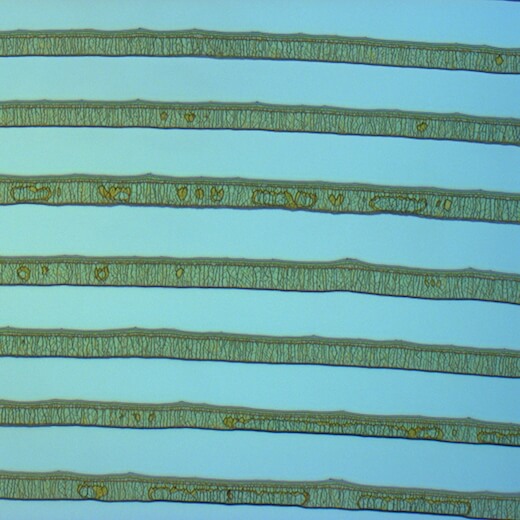News
Periodic bands of colloidal deposits on a silicon substrate placed vertically. (Photo courtesy of the Aizenberg Lab, SEAS)

Evaporating liquids often leave behind a residue of particles that can be shaped in concentric bands, like coffee rings, uniform films like soup stains, or more intricate patterns like the salt left over from snow melt or the above colloidal deposits. The mechanisms behind the different patterning types remain largely mysterious. Now, researchers at the Harvard John A. Paulson School of Engineering and Applied Sciences have unlocked the dynamics of evaporative patterning, revealing that the type of patterns left behind depends on the evaporation rate, particle density, fluid viscosity and surface forces between the liquid and the substrate. Understanding the dynamics of evaporative patterning is important because evaporation is a commonly used technique to assemble particles that are too small to manipulate individually, such as colloids, and to synthesize functional interfaces with unusual optical and mechanical properties.
This research, led by L. Mahadevan, the Lola England de Valpine Professor of Applied Mathematics, of Organismic and Evolutionary Biology, and of Physics, was published recently in the journal Physics of Fluids. Mahadevan is also a member of the Kavli Institute for Bionano Science and Technology and core member of the Wyss Institute for Biologically Inspired Engineering at Harvard University. The paper was co-authored by Nadir Kaplan, Ning Wu, Shreyas Mandre and Joanna Aizenberg, the Amy Smith Berylson Professor of Materials Science. Aizenberg is also the director of the Kavli Institute and core member of the Wyss Institute.
Topics: Applied Physics
Cutting-edge science delivered direct to your inbox.
Join the Harvard SEAS mailing list.
Press Contact
Leah Burrows | 617-496-1351 | lburrows@seas.harvard.edu



